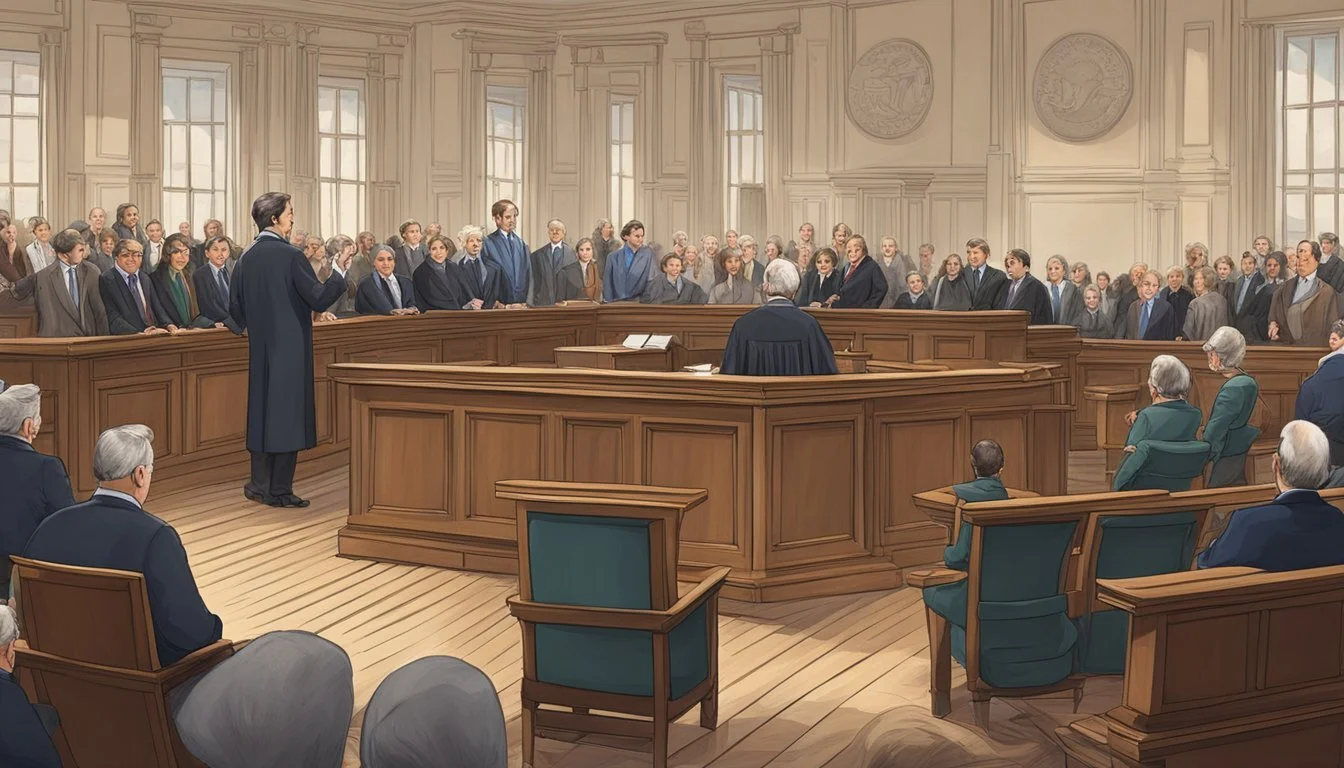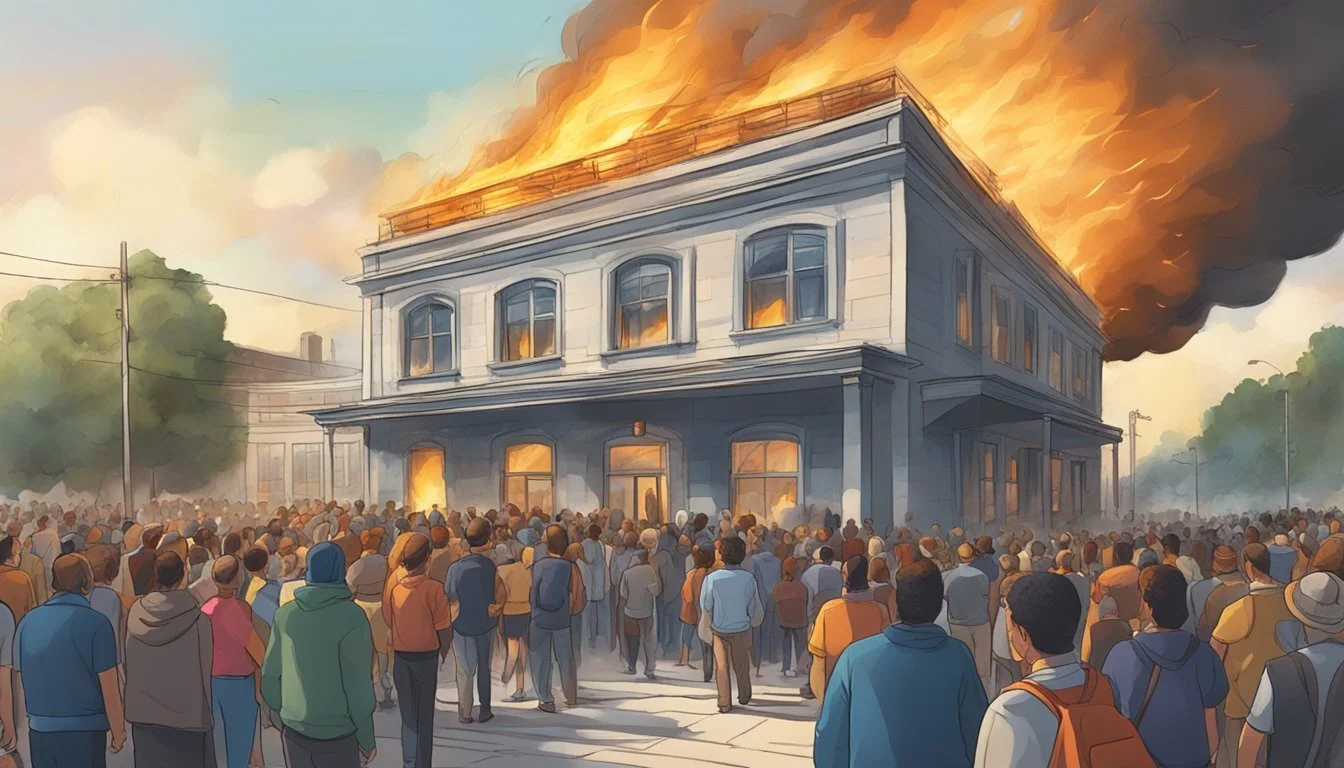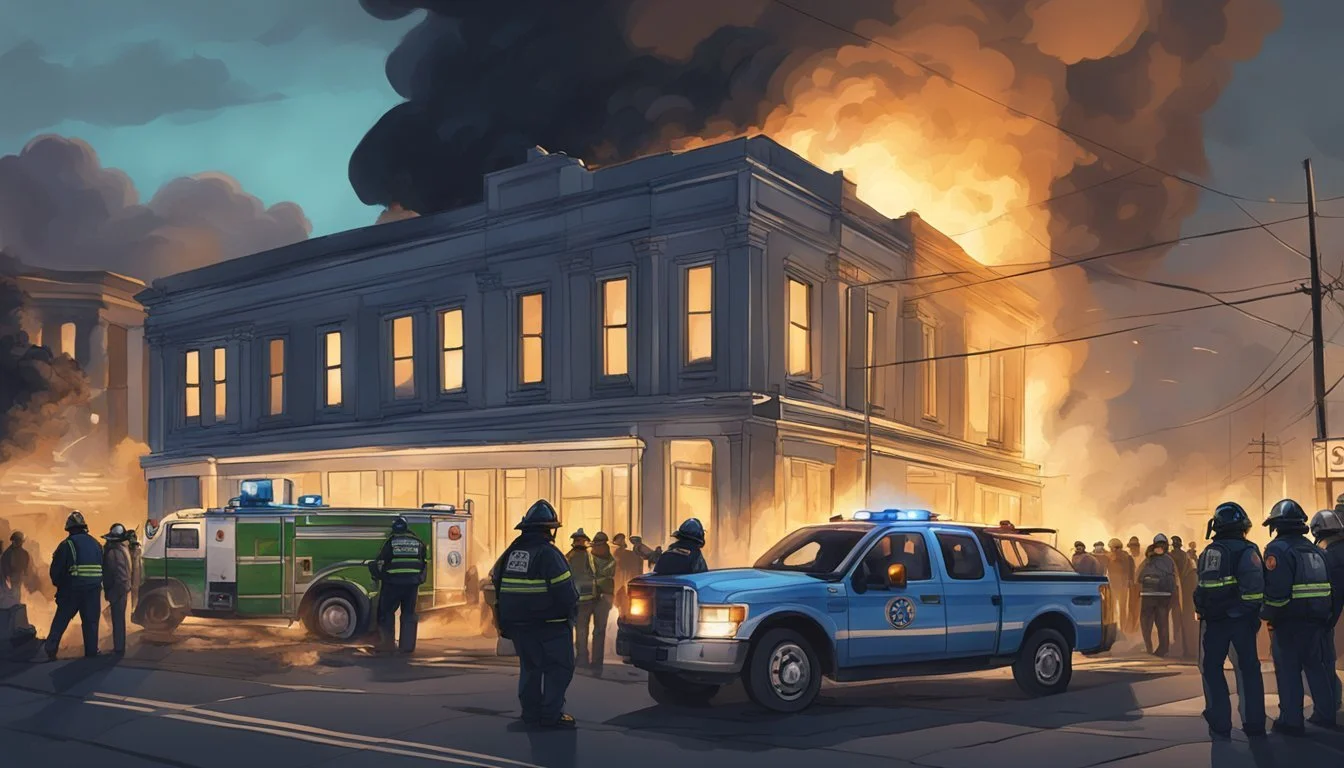Is Anthony Kirkland, Cincinnati's Serial Arsonist, Still Alive?
Latest Updates on His Status
Anthony Kirkland, a notorious serial killer from Cincinnati, gained infamy for his brutal crimes committed between 2006 and 2009. His reign of terror included not only murders but also a series of arsons that left the community on edge.
As of September 2024, Anthony Kirkland remains alive on death row in Ohio. He was sentenced to death for the murders of two women and two girls, following a previous 16-year prison term for killing his girlfriend in 1987.
Kirkland's arson spree extended to popular areas like Riverfront Park, where he set fires that endangered park visitors and nearby structures. His case has drawn significant attention due to its brutality and the legal proceedings that followed, including a resentencing ordered by the Ohio Supreme Court.
Background on Anthony Kirkland
Anthony Kirkland, born September 13, 1968, became one of Cincinnati's most notorious serial killers. His criminal history spans decades and includes multiple murders, arson, and other violent crimes.
Early Life and Criminal Behavior
Little is known about Kirkland's childhood in Cincinnati, Ohio. His criminal behavior began early, culminating in the 1987 murder of his girlfriend when he was 18 years old. This crime resulted in a 16-year prison sentence.
Kirkland's violent tendencies and antisocial behavior were evident from a young age. Experts later suggested he may have suffered from antisocial personality disorder, contributing to his lack of empathy and disregard for others.
Upon his release from prison in 2003, Kirkland struggled to reintegrate into society. He faced challenges finding employment and maintaining stable relationships.
Path to Serial Arson and Murder
Between 2006 and 2009, Kirkland embarked on a terrifying spree of violence in Cincinnati. He murdered four females, including two women and two young girls. His crimes often involved sexual advances followed by strangulation.
Kirkland's signature was setting his victims' bodies on fire after killing them. This combination of murder and arson earned him the moniker "Cincinnati's Serial Arsonist."
His victims included:
Casonya Crawford, 14
Mary Jo Newton, 45
Kimya Rolison, 25
Esme Kenney, 13
Kirkland's final victim, Esme Kenney, led to his capture in 2009. Police found him in the woods near her body, bringing an end to his reign of terror in Cincinnati.
Major Crimes and Victims
Anthony Kirkland committed a series of brutal murders in Cincinnati between 1987 and 2009. His victims ranged from young teenagers to adult women. Kirkland's crimes involved strangulation, rape, and attempts to destroy evidence through arson.
Details of the Murders
Kirkland's killing spree began in 1987 with the murder of Leola Douglas, age 27. After serving time for this crime, he resumed his violent acts in the late 2000s. In 2006, Kirkland killed Mary Jo Newton, 45, and Kimya Rolison, 25.
His most notorious crimes occurred in 2009. Kirkland murdered 13-year-old Esme Kenney and 14-year-old Casonya Crawford. Both girls were strangled. Kirkland attempted to burn their bodies to destroy evidence.
Profile of the Victims
Kirkland's victims were all female, ranging in age from 13 to 45. They included:
Leola Douglas, 27
Mary Jo Newton, 45
Kimya Rolison, 25
Casonya Crawford, 14
Esme Kenney, 13
The younger victims were targeted while engaging in everyday activities. Esme Kenney was jogging near her home when abducted. Casonya Crawford was walking to a friend's house.
Evidence and Conviction
Police obtained a confession from Kirkland for several murders. Forensic evidence played a crucial role in his conviction. DNA evidence linked Kirkland to multiple crime scenes.
Key evidence included:
DNA matches to victims
Items belonging to victims found in Kirkland's possession
Burn patterns consistent with Kirkland's arson attempts
In 2010, Kirkland was convicted and sentenced to death for the murders of Esme Kenney and Casonya Crawford. The Ohio Supreme Court upheld this sentence in a later appeal.
Legal Proceedings and Conviction
Anthony Kirkland faced multiple trials and legal proceedings for his crimes in Cincinnati. His case drew significant attention due to the nature and number of his offenses, leading to intense scrutiny and debate over sentencing.
Trial Highlights
Kirkland's trial focused on his murders of Casonya Crawford and Esme Kenney. Prosecutors presented evidence linking him to the crimes, including DNA and physical evidence found at the crime scenes. Kirkland's defense team argued for leniency, citing his troubled background and mental health issues. The trial lasted several weeks, with testimony from forensic experts, law enforcement officers, and family members of the victims.
Joe Deters and Closing Arguments
Hamilton County Prosecutor Joe Deters played a crucial role in Kirkland's case. In his closing arguments, Deters emphasized the brutality of Kirkland's crimes and urged the jury to recommend the death penalty. He highlighted Kirkland's pattern of violence against women and girls, describing him as a dangerous predator who posed an ongoing threat to society. Deters' passionate delivery and detailed presentation of evidence left a strong impression on the jury.
Death Sentence and Appeals
The jury recommended the death penalty for Kirkland, which the judge imposed. This decision sparked a series of appeals. In 2014, the Ohio Supreme Court upheld Kirkland's conviction but ordered a new sentencing hearing due to prosecutorial misconduct. At the resentencing in 2018, Kirkland again received the death penalty. The Ohio Supreme Court later upheld this second death sentence, rejecting Kirkland's arguments for leniency. Kirkland remains on death row, with further appeals likely to continue through the legal system.
Media Attention and Public Interest
Anthony Kirkland's crimes gripped Cincinnati, sparking intense media coverage and public concern. His actions left a lasting impact on the community and raised urgent questions about safety and justice.
Press Coverage and Public Safety Concerns
Local and national media outlets extensively covered Kirkland's crimes and trials. News reports focused on the gruesome details of his murders and arsons, fueling public fear. Headlines highlighted the serial nature of his attacks, emphasizing the threat to public safety.
Police issued warnings and safety tips to citizens, especially women and children. Neighborhood watch groups formed, and self-defense classes saw increased enrollment. The media spotlight on Kirkland's case led to debates about criminal justice reform and mental health resources.
Community Impact of the Crimes
Kirkland's violence traumatized Cincinnati residents. Families of victims spoke out, sharing their grief and anger. Vigils and memorials brought people together to mourn and seek healing.
Many citizens reported increased anxiety and hypervigilance. Mental health professionals noted a rise in trauma-related symptoms among residents. Schools and community centers offered counseling services to help people cope.
The case prompted discussions about violence prevention and support for at-risk individuals. Some community leaders called for improved rehabilitation programs for offenders with violent histories.
Incarceration and Death Row
Anthony Kirkland resides on Ohio's Death Row for his brutal crimes. His case highlights the harsh realities of life for condemned prisoners and raises questions about capital punishment.
Conditions and Life on Death Row
Kirkland occupies a cell at the Chillicothe Correctional Institution, where Ohio houses its male Death Row inmates. Death Row prisoners face strict limitations on movement and activities. They spend up to 23 hours per day in their cells. Inmates receive meals in their cells and have limited opportunities for recreation or social interaction.
Kirkland's daily routine involves frequent security checks and limited personal property. He has access to a small selection of books and writing materials. Death Row inmates can receive limited visits from approved family members and attorneys, conducted through glass partitions.
Reflections on Capital Punishment
Kirkland's case reignited debates on the death penalty in Ohio. Supporters argue his heinous crimes warrant the ultimate punishment. Critics question the effectiveness and morality of execution.
The legal process for Death Row inmates is lengthy. Multiple appeals can stretch on for years or decades. This extended wait time takes a psychological toll on prisoners. Some argue it constitutes cruel and unusual punishment.
Kirkland's own reflections on his sentence have been limited in public statements. His case serves as a focal point for ongoing discussions about justice, rehabilitation, and the role of capital punishment in society.
Kirkland's Psychological Profile
Anthony Kirkland's psychological makeup reveals complex factors contributing to his violent behavior. Experts have scrutinized his mental state to understand the driving forces behind his crimes.
Assessment of Psychopathy
Kirkland exhibits several traits associated with psychopathy. He demonstrates a lack of empathy for his victims and shows little remorse for his actions. His criminal history suggests a pattern of antisocial behavior and disregard for societal norms.
Mental health professionals have noted Kirkland's manipulative tendencies and superficial charm. These characteristics are often linked to psychopathic individuals. His ability to evade capture for extended periods points to a calculated approach to his crimes.
Kirkland's modus operandi of using fire to destroy evidence indicates a methodical nature. This behavior aligns with the organized planning often seen in psychopathic offenders.
Possible Mitigating Factors
Experts have identified potential mitigating factors in Kirkland's psychological profile. Brain scans revealed abnormalities that may have affected his behavior and decision-making abilities.
Multiple head injuries throughout Kirkland's life could have contributed to these abnormalities. Such trauma can impact impulse control and emotional regulation.
Substance abuse issues have been noted in Kirkland's history. Drug use may have exacerbated his violent tendencies and impaired his judgment.
Childhood experiences, including possible neglect or abuse, may have played a role in shaping Kirkland's psychological state. These early traumas can contribute to the development of antisocial personality traits.
Rehabilitation efforts during Kirkland's previous incarcerations appear to have been ineffective in addressing his underlying psychological issues.
Conclusion
Anthony Kirkland's case remains a somber chapter in Cincinnati's criminal history. His actions profoundly impacted the community and justice system.
Current Status and Final Thoughts
Anthony Kirkland is currently on death row at Ohio State Penitentiary. The Ohio Supreme Court upheld his death sentence in a recent ruling, affirming the decision made in his second penalty phase hearing. Kirkland's crimes, which occurred in Cincinnati neighborhoods like Avondale and Walnut Hills, shocked residents and law enforcement alike.
His arrest came after a SWAT standoff, ending a period of fear for the community. The case highlighted issues within the criminal justice system, as Kirkland had previously served time for a similar offense. The debate surrounding the death penalty continues, with Kirkland's case often cited in discussions about its application and effectiveness.
As the legal process moves forward, the victims' families and the Cincinnati community continue to grapple with the aftermath of Kirkland's actions.








